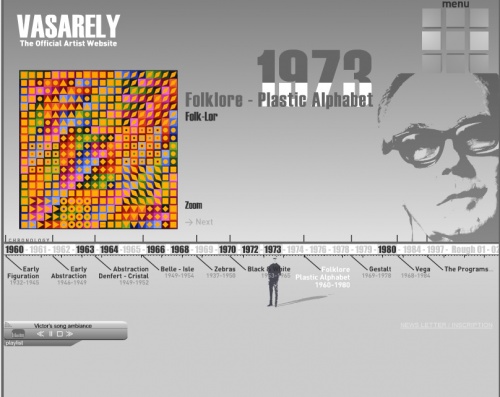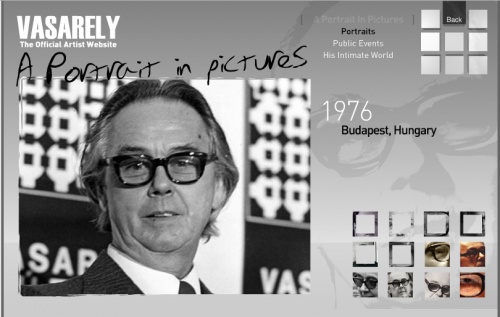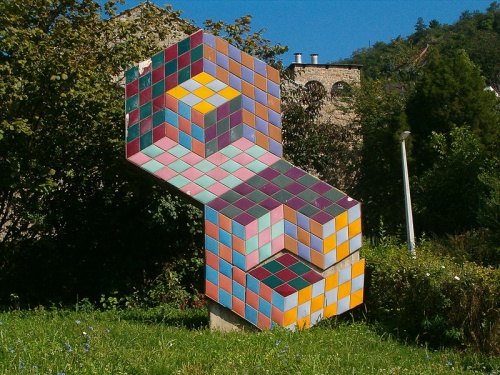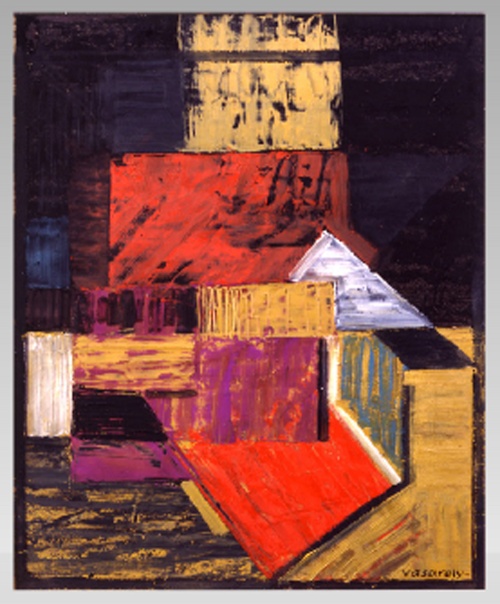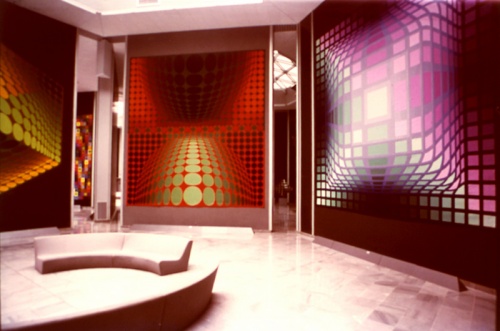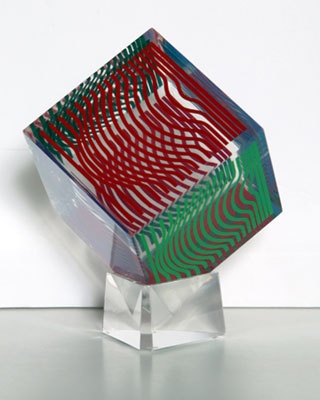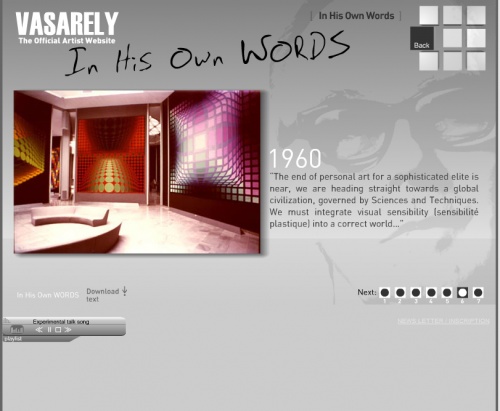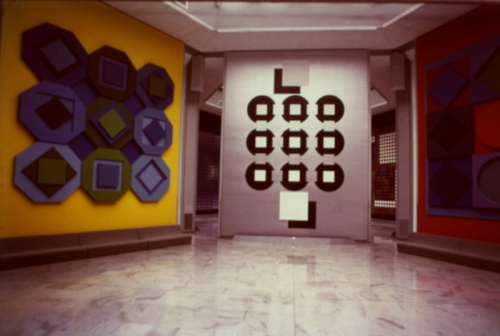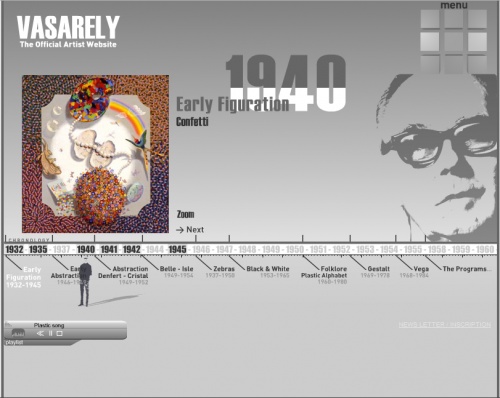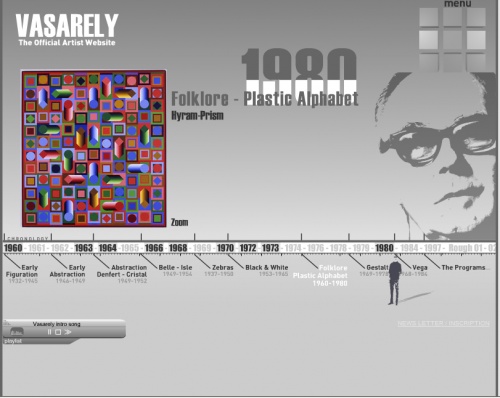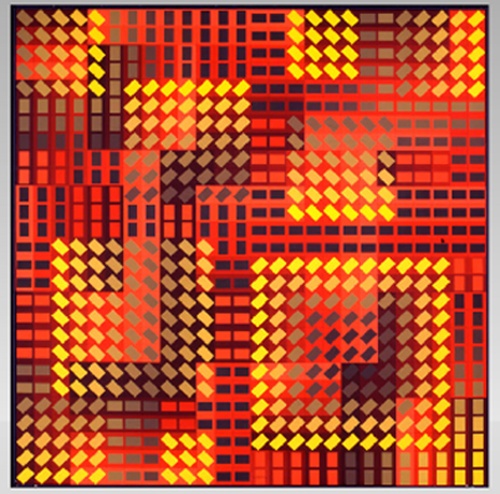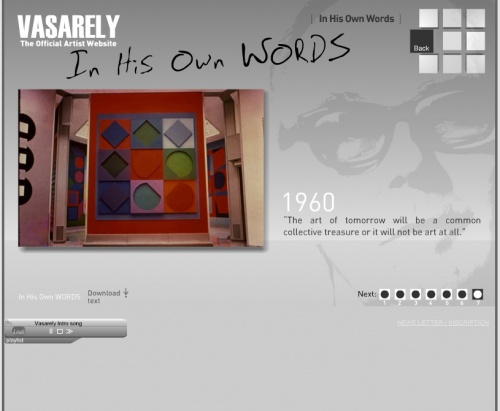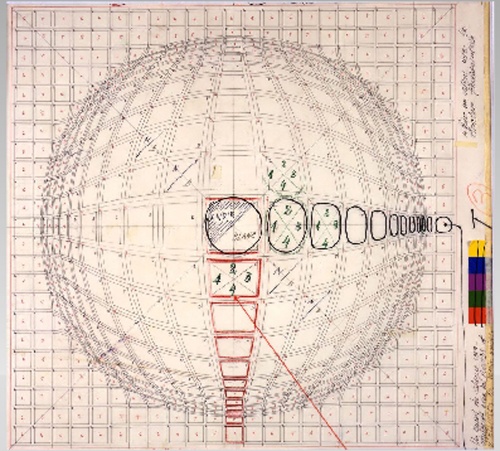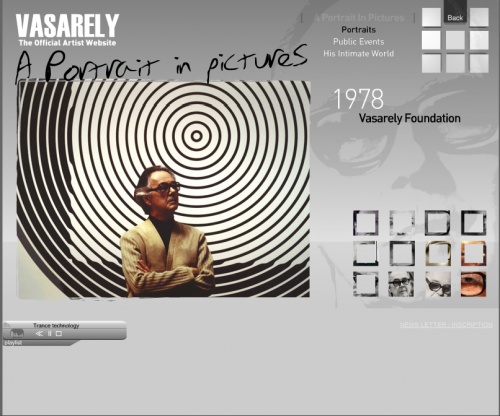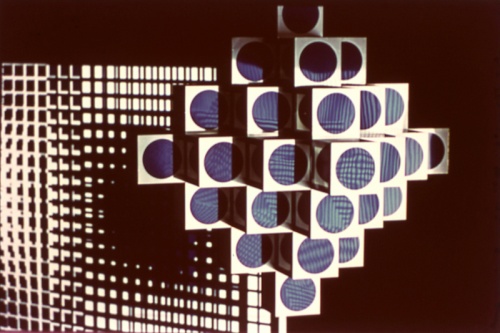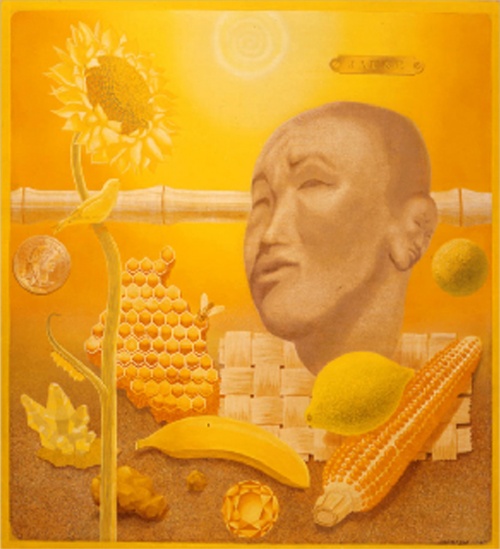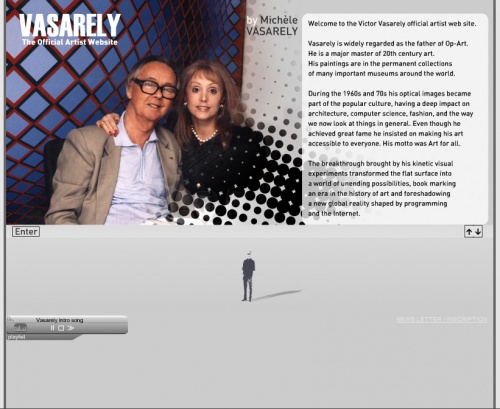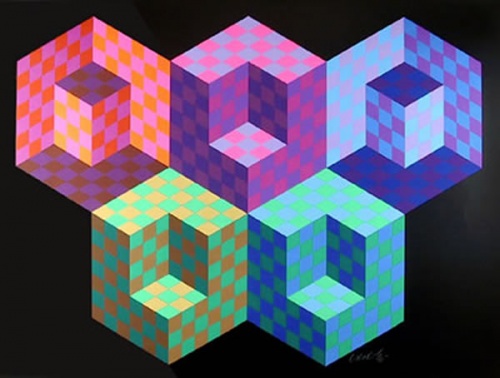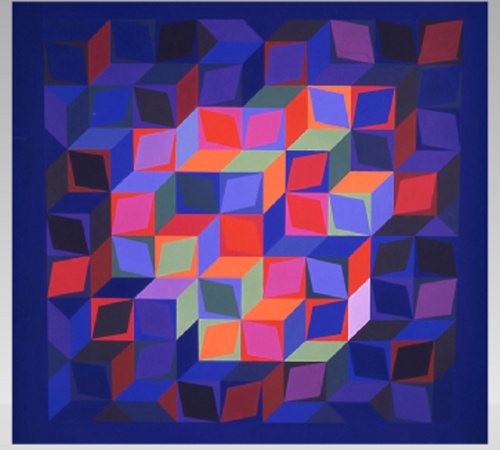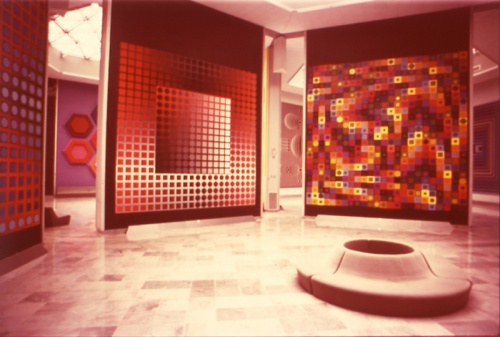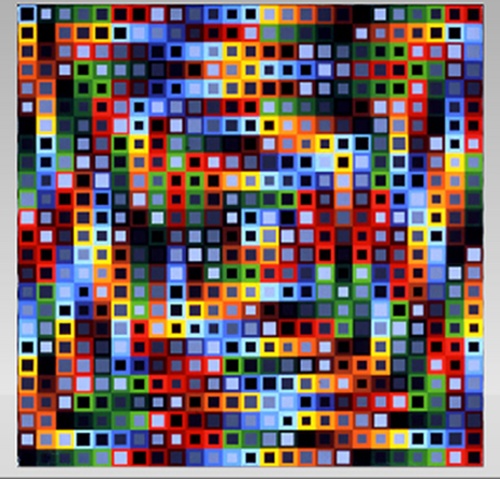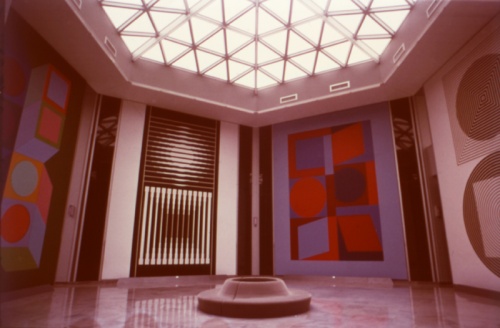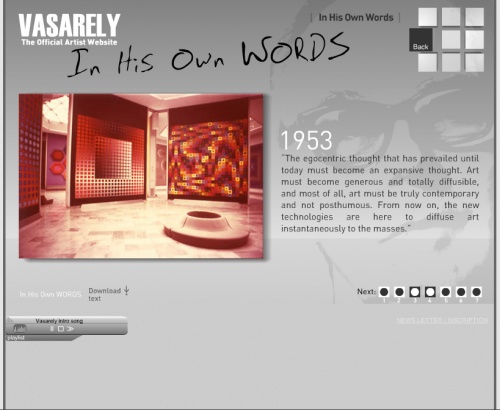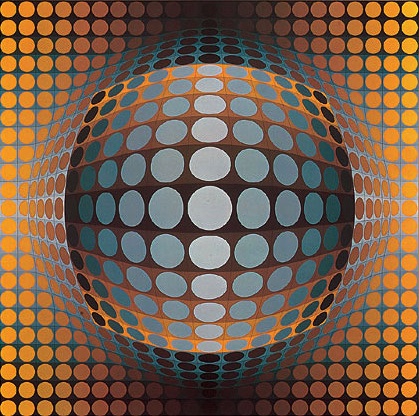Victor Vasarely (137 works)
Разрешение картинок от 248x350px до 2544x3498px
VASARELY, VICTOR (Vasarély, Victor) (real name Vásárhelyi, Vasarhelyi) (1906–1997), French artist and art theorist, founder of op art.
Born in the city of Pecs (Hungary) on April 9, 1908 in the family of a wealthy peasant farmer. From 1925 he studied medicine in Budapest. Deciding to become an artist, from 1927–1929 he studied at local private academies, while working in the field of commercial design. In 1930 he went to Paris, where he opened an advertising graphics bureau; From then on he used a romanized version of his surname as a pseudonym.
He transferred his experience as a poster artist to his early black and white graphics, based on the optical effects of “flowing” of abstract forms and patterns into figured ones and vice versa. He was also actively engaged in painting of the same kind, where natural motifs increasingly turned into fragments of a kind of total ornament, destroying traditional ideas about the visual relationship of the foreground and background. The “Belle-ile” (“Beautiful Island”; 1947–1954) period is characterized by elliptical configurations, soft and natural in rhythm; a little later, the partly parallel “Crystalline Period” (1948–1960) began with its more strict geometricism. However, unlike representatives of constructivism, he was interested not so much in the geometric structure of the work as such, but in the visual field between the work and the eye. This field has truly become a game field for him, giving rise to endless spatial “deceptions”. In the 1950s, Vasarely began to give his images real plastic three-dimensionality, creating relief color compositions, as well as sculptures in the form of transparent illuminated boxes with glass plates inside. In any case, he was most interested in purely illusory plasticity, that optical “third world” that acquires living kineticism in the play of contrasting shapes and colors. Dedicated to this “third world” was the Yellow Manifesto, named after the color of the paper on which it was printed (1955), a manifesto that became an op art program.
From now on, his paintings and graphics became “plastic units” (“unites plastiques”), which could continue to be combined in various ways without the participation of the author. The author's poetics played a role, for example in the shimmering Cosmic Structures of the late 1950s (Metagalaxy, 1959, D. Rene gallery, Paris; etc.), most of them named after constellations, but in general Vasarely’s personal style became increasingly more widespread, in circulation, passing into the hands of assistants and consumers (as Vasarely emphasized in theoretical texts, this kind of combinatorics and circulation only further enriches the work). The master’s images were not only embodied in the form of architectural structures and monumental decoration (the composition of Paravist on the floor of the Faculty of Natural Sciences in Paris, 1967), not only actively influenced fashion, packaging and design in general, including the “supergraphics” decorating new buildings ”, but were also produced in the form of commercial products (decorative objects and children's toys). In 1976, in Aix-en-Provence, in a building designed by Vasarely himself, a foundation named after him was opened. Since 1982, the artist’s museum has existed in his hometown.
Vasarely is one of the founders of the so-called optical art, or op art, which chronologically coincided with pop art (1960s). Following the main idea of this creative direction, the artist involves the viewer in the contemplation of the illusionistic effect, resorting to all kinds of optical tricks. How to create, using only the laws of geometry, an image that is equally real and illusory is a task that completely fascinated Vasarely throughout his entire creative life.
Scan of the book Gaston Diehl Vasarely
Gaston Diehl (10 August 1912 – 12 December 1999), French art history professor and art critic
Since I did not find the book in Hungarian and did not find a translation, I present to your attention only pictures from the book and information material from the Internet.
Op art (English op art, short for optical art - optical art) is a movement in the art of the 20th century, which became widespread in the 1960s. Op art artists used various visual illusions, relying on the peculiarities of perception of flat and spatial figures. The effects of spatial movement, merging, and floating of forms were achieved by introducing rhythmic repetitions, sharp color and tonal contrasts, the intersection of spiral and lattice configurations, and twisting lines. In op art, installations of changing light and dynamic structures were often used (see kinetic art). Illusions of flowing movement, sequential changes of images, unstable, continuously rearranging forms appear in op art only in the viewer’s perception. The direction continues the technicist line of modernism.
The task of op art is to deceive the eye, provoke it to a false reaction, to evoke a “non-existent” image. A visually contradictory configuration creates an insoluble conflict between the actual form and the visible form.
Op art deliberately defies norms
human perception. Research by psychologists has shown, for example, that the eye always strives to organize chaotically scattered spots into a simple system (gestalt). In optical painting, on the contrary, simple elements of the same type are arranged in such a way as to disorient the eye and prevent the formation of an integral structure.
The Visual Arts Research Group (an association of optical and kinetic artists) wrote in its manifesto, Enough Mystification (1961): “There should no longer be works exclusively for: the cultural eye, the sensitive eye, the intellectual eye, the aesthetic eye, the amateur eye. The human eye is our starting point."
The “human eye” refers to typical mental reactions on the basis of which illusions arise. Such illusions are truly universal in nature and do not depend on the individual consciousness, culture, beliefs and tastes of the individual. In this sense, op art creations are publicly available. In addition, many works of this direction, due to the elementary form and low cost of materials (paper, various types of plastics), are easily reproduced in industry. On these grounds, artists were proud of the democratism of their art. Thus, Vasarely wrote: “My goal is to introduce plastic consciousness into everyday life. My works offer the social welfare of excellence.”
Representatives of op art argued that their works encourage the viewer to actively participate in creativity, since the eye itself generates the form and transforms the “matter” of painting into the “energy” of the visible image
If in nature we see beauty even where chaos reigns and there is no rhythm, then op art, like man striving to transform nature, seeks beauty and expressiveness in a clear, but difficult for our perception, geometric pattern, introducing chaos into our sense of form and space and thus achieving a certain effect. Our perception strives to organize the image of chaotically scattered colored spots visible to the eye into a simple system; op art, on the contrary, using strict geometric structures destroys the integrity of perception, demonstrating the features of our perception.
And now other materials that were not in the book.......
